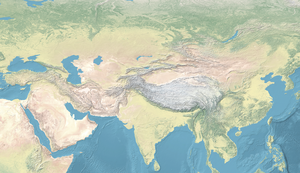Kulay_culture
Kulay culture
Archaeological culture from Siberia
The Kulay culture was a culture of the forests of Siberia during the 1st millennium BCE, in the northern taiga zone of the Ob' River basin.[1] They used bronze and related basic iron technologies, and their designs were related to the Animal style of the steppes.[2] Their pottery had sophisticated stamp decoration.[1]
This article may require copy editing for grammar, style, cohesion, tone, or spelling. (April 2024) |

The Kulai culture was located just north of the Saka Sargat culture and Tasmola culture.
Anthropomorphological studies indicated both "Caucasoid" and "Mongoloid" components among human remains affiliated with the Kulay culture.[3]

